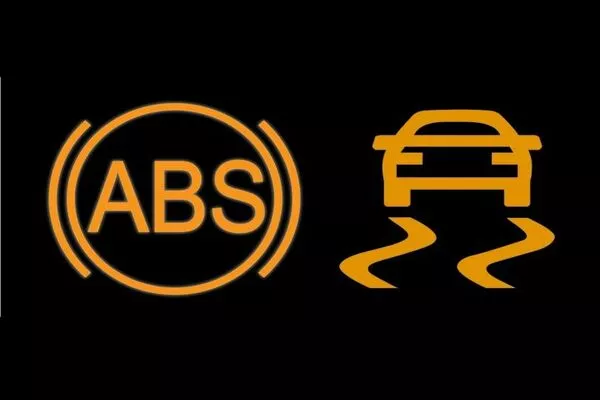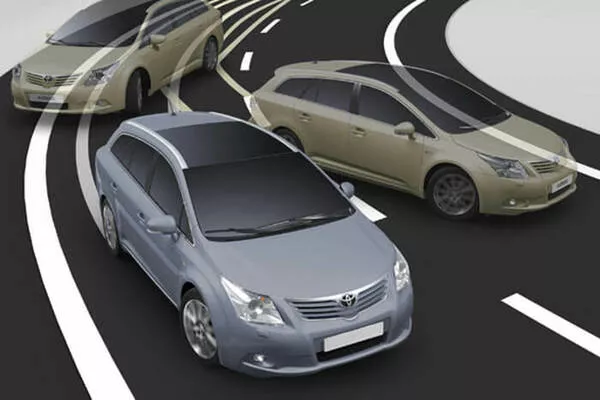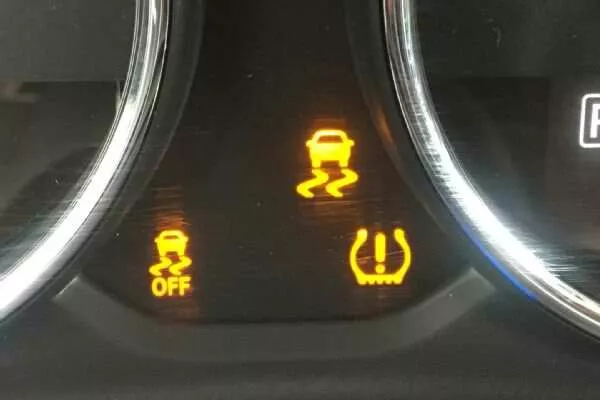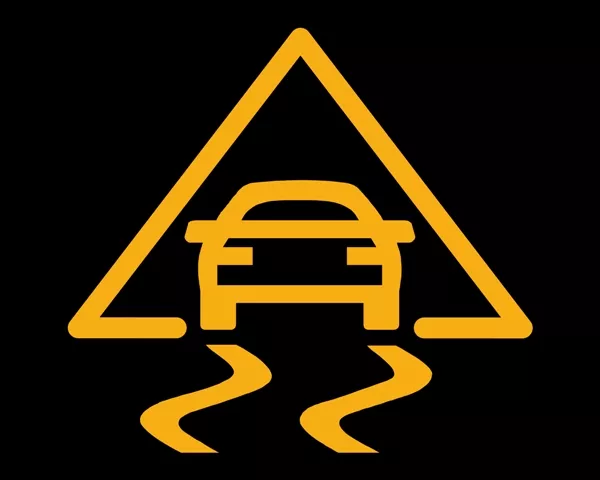ESC stands for Electronic Stability Control. Almost all modern cars already have this feature and it will be hard to look for a modern vehicle that doesn’t have ESC. Let’s dig deeper about what ESC is and how it benefits modern cars as well as the common causes why the ESC light is illuminating. Read on this article from Philkotse.com to know more.
1. What is ESC?
ESC is attributed to the reduced number of road accidents on roads and highways. This feature is also referred to as Electronic Stability Program (ESP) or Dynamic Stability Control (DSP). When a driver is in a skidding condition, the ESC works hand in hand with the ABS to assist the driver on steering.

The ESC works hand in hand with the ABS to assist the driver on the steering
In this case, the sensors mounted on each wheel as well as the car's onboard computer will detect if the vehicle is out of control. It will then apply the brakes on either of the wheels. The system will also reduce the power of the engine to further prevent skidding.

The sensors mounted on each wheel as well as the car's onboard computer will detect if the vehicle is out of control
>>> Read more: An easy explanation of Electronic Stability Control (ESC).
2. Identifying ESC light and its meaning
It’s easy to identify the ESP light in the car’s dashboard. It is the dashboard light with a car with wavy lines sign. Electronic Stability Control light illuminates if the vehicle activates ESC because of lack of steering control, particularly when driving on a slippery road. The light will stay illuminated as the vehicle attempts to regain traction control.
If you’re driving on a smooth surface but the ESP light keeps on blinking, there’s a high chance that the ESC system of your vehicle is experiencing problems. Usually, it is because of sensors that are faulty and need replacement. There are modern vehicles that have a switch button that enables you to switch off the ESP.

The ESC is the dashboard light with two skid marks and a car on top
The electronic stability control is connected to the sensors placed on each wheel. This is to identify the intended direction and steering of the driver. When the driver gets him on a skidding condition, the vehicle may understeer or oversteer.
When this happens, the ESC will do its intended purpose by correcting the skidding effects before it results in an accident. Majority of racing drivers choose to turn it off because it provides more control over the car. But, for drivers driving on the regular road or highway, turning it on is a must for safety purposes.
>>> Also relevant: ABS warning light on 6 causes of an illuminated ABS.
3. How does ESC work?
The Electronic Stability Program of a car cannot do the job alone. It works together with the anti-lock brake system (ABS) and traction control. However, not all vehicles having ABS also have ESC.
Electronic stability control is responsible for monitoring the wheel speed and steering angle to detect if the vehicle is skidding. Once the system notices that the driver is starting to lose power, it will disconnect the power and apply ABS which will allow the driver to regain control of the car.
Most drivers think that illuminating ESC light will mean that the vehicle will do all the job for you. However, the system will only help you if you lose traction. As a driver, you still have to exert effort in slowing down the vehicle when it skids on the slippery road. Take note to leave the light illuminated for emergencies.

ESC is responsible for monitoring the wheel speed and steering angle to detect if the vehicle is skidding
This is why ESC shouldn’t be a replacement for safe driving as what most car manufacturers maintained. This is because lots of drivers today are becoming overconfident if their vehicle is equipped with the ESC system.
If you recklessly maneuver your car, you should expect that it will steer out of your control. Always remember that electronic stability control reduces the chances of accidents but it doesn’t get rid of them.
The ESC system was initially launched in the Toyota Crown in 1983 and was called the “Anti-skid Control”. In the year 1987, Mercedes Benz and BMW developed their electronic stability control system. Lots of car manufacturers followed suit. In 2009, the European Union made the ESC system mandatory for all vehicles.
>>> Related: Car with wavy lines symbol: Meaning, function, and importance
4. Common problems correlated with ESC light
When fixing issues concerning the ESC light, you first need to consult the manufacturer’s manual of the car and check for the specific error codes. Most probably, the error code will direct you to the anti-lock brake system, steering control unit or transmission. If you want to diagnose the error code properly, you will need a device called an OBD2 scanner. You can purchase one of these scanners at an inexpensive price.
Malfunctioning wheel sensor
The job of the wheel sensor is to deliver information to the anti-lock brake system will help assist drivers in steering the vehicle when driving in bad weather conditions and slippery roads. Once the wheel sensor is malfunctioning, the ABS dashboard light will also illuminate. The ABS light also lights on if your vehicle has a malfunctioning ABS pump or worn-out brake pads.

ABS rings and faulty wheel sensors can be fixed by cleaning the dirt particles off the sensor
ABS rings and faulty wheel sensors can be fixed by cleaning the dirt particles off the sensor. These dirt particles prevent these parts from doing their intended jobs which is to deliver the right data to the ABS and ESP. if the wheel sensor is malfunctioning, you are likely to experience problems when you apply pressure to the brakes.
Malfunctioning Steering Angle Sensor
Another reason why the ESC light is constantly lighting up is a malfunctioning steering angle sensor. Contact a mechanic to resolve this type of issue.
>>> Check out: 9 common car sensors and the facts that you might not know.
Wiring issues
The information of the vehicle’s traction from the wheel sensors is delivered to the onboard computer through a set of wires. But, if any of these wires are not connected properly, or if the fuse of the Esc is blown, the ESC light will not illuminate.
The malfunctioning traction control module
The job of the traction control is to determine the total pressure applied on the brakes every time the driver loses control. Constant communication with the wheel sensors is needed. If your vehicle has a faulty traction control system, the ESC will fail to function.

ESC is attributed to the reduced number of road accidents on roads and highways
If you don’t want the hassle of figuring it out yourself, you can take the other option, take your vehicle to a qualified mechanic. This is the most effective and convenient solution option for you. They will do the job of diagnosing the codes and fixing the ESC problems for you.
Remember that driving your vehicle with a malfunctioning ESC is very dangerous because you only have limited control over the vehicle especially if you are driving on a slippery road.
Recent posts
- 6 steps for problem-free dashboard lights Aug 16, 2022
- Driving on slippery roads without ABS: 5 easy steps to follow Nov 30, 2022
- What should we do with an out of control car? Oct 08, 2018
- Suspension modifications for city driving & heavy duty in the Philippines Feb 17, 2021
- 12 safety features of modern cars you should understand Jul 26, 2018












